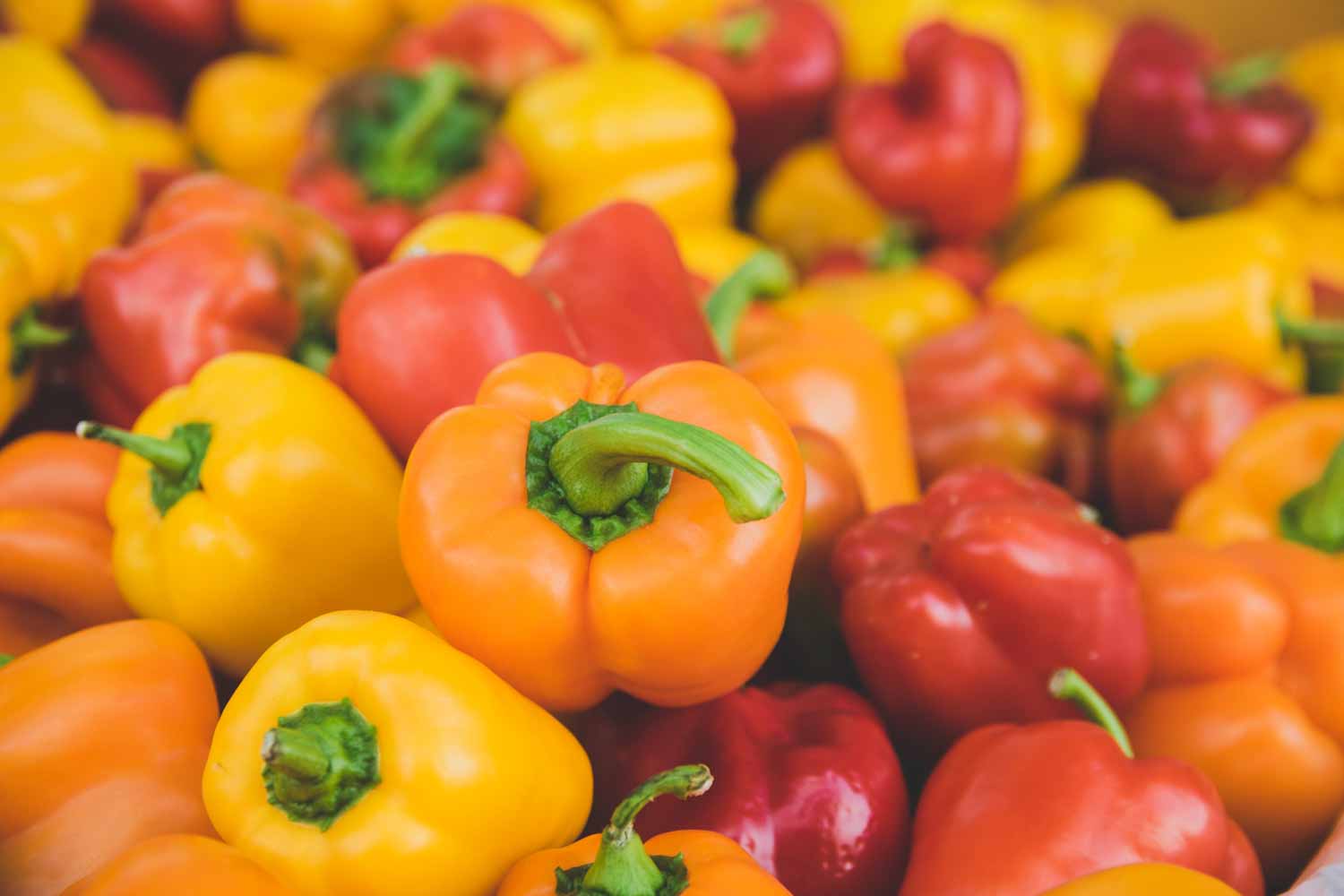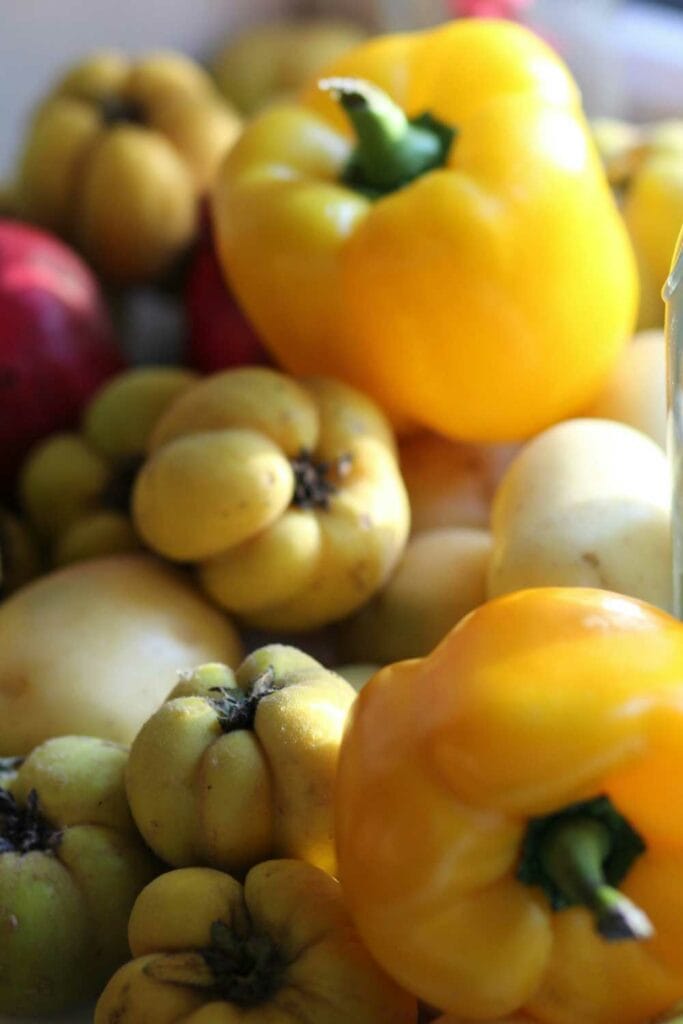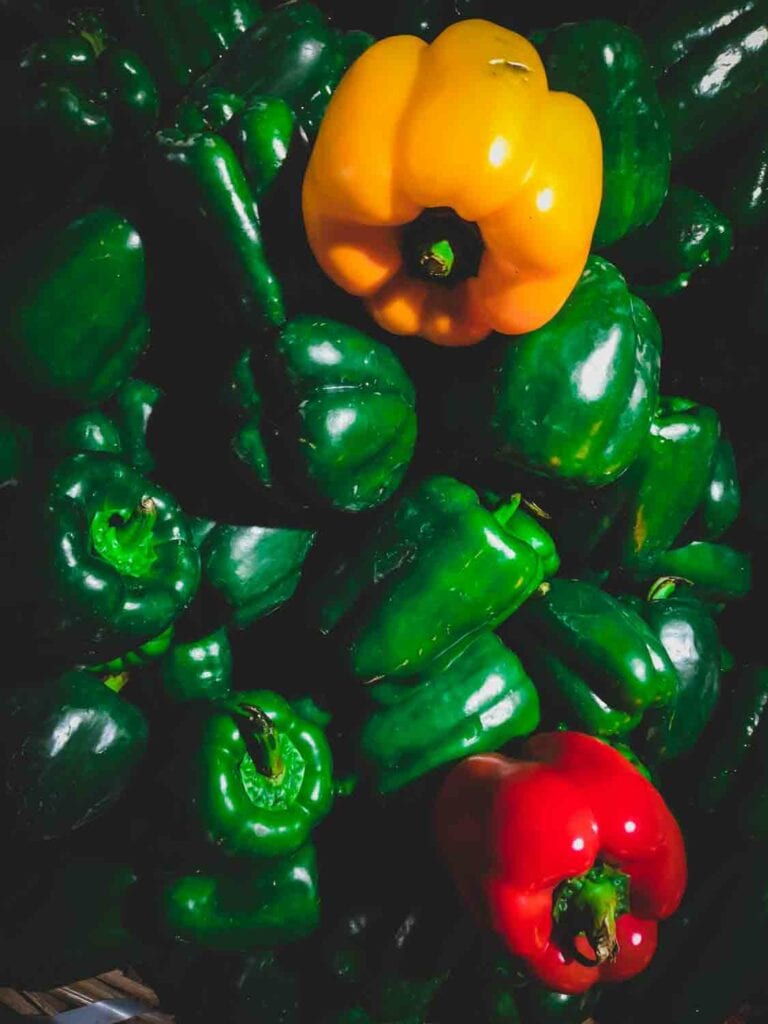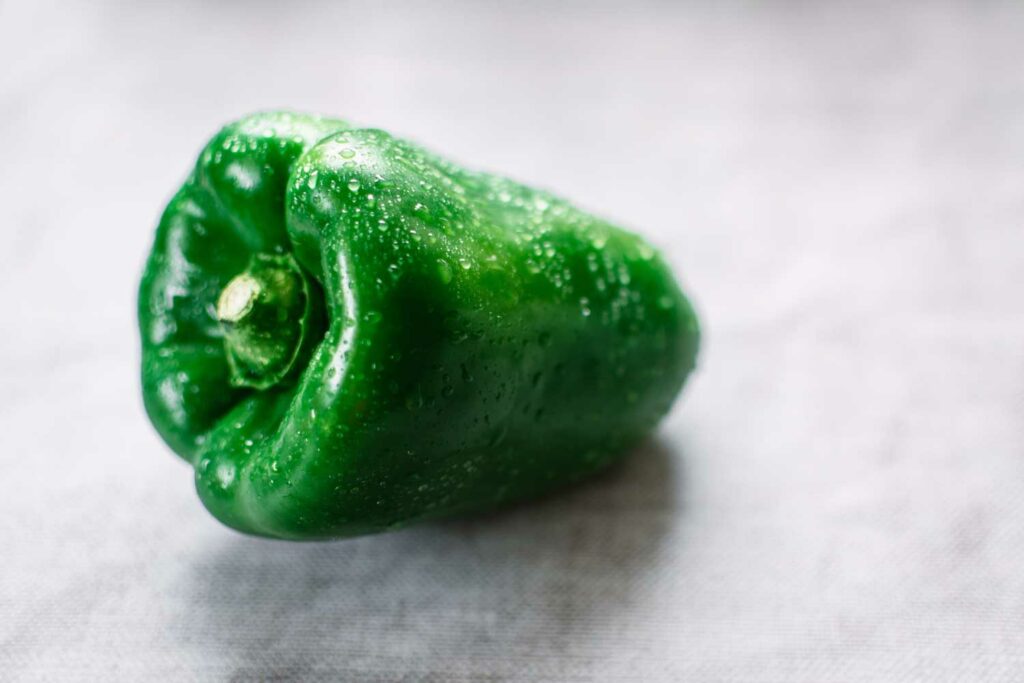
Are bell peppers low FODMAP?
Yes, you can eat bell peppers or capsicum during the FODMAP diet. But in a limited quantity. In addition, there is a difference in the FODMAP content for different colors of bell peppers.
When I started the FODMAP diet, bell peppers were one of the foods that you could eat without restriction. However, Monash University tested bell peppers again in 2022 and the amounts that are low FODMAP have changed.
Monash University indicates that this has to do with, among other things, how these types of crops grow, whether they are modified, how they are stored, and what fertilizer is used.

In what quantity are bell peppers low FODMAP?
In the Monash University FODMAP app, you can find four colors of bell peppers. This is what is said about bell peppers in the app:
Red bell pepper
Red pepper is low FODMAP up to 43 grams or 1/3 cup per meal. From 57 grams (1/4 medium bell pepper) or more, a serving contains an average amount of fructose.
And from 75 grams (1/3 medium bell pepper) or more a high amount of fructose.
If you want to use red bell pepper in a dish, it is important to weigh it carefully. You can only use a small amount.
Yellow or orange bell pepper or capsicum
These bell peppers are low FODMAP up to 38 grams or 1/4 cup per meal. From 51 grams or 1/3 cup, a serving contains an average amount, and from 75 grams or 1/2 cup or more a high amount of fructose.
You can eat just a little less of these bell peppers than a red bell pepper. But it comes down to pretty much the same thing.

Green bell pepper
Green bell peppers are the bell peppers that have the largest safe serving.
The app indicates that a serving of 75 grams (1/2 cup) is low FODMAP. Only at 250 grams (1 3/4 cups) does a serving contain an average amount of fructans and at 310 grams (2 cups) or more a high amount of fructans.
The portion sizes given by Monash University are sometimes a bit confusing. Because does this mean that you can only eat 75 grams or more?
Monash University calls 75 grams of green bell pepper “1 serve”. But if a food is low FODMAP up to a larger amount, you can also eat multiple servings of it without any problems.
In this case, the app indicates that green bell peppers contain an average amount of fructans from servings of 250 grams or higher. So simply stay below that amount.
This means that for an average-sized green bell pepper, you can safely eat a whole green bell pepper.

Fructans
Interestingly, green bell peppers contain the FODMAP group fructans, while red, yellow, and orange bell peppers contain the FODMAP group fructose.
This probably has to do with the ripeness. Green bell peppers are the least ripe of the four colors of bell peppers. As bell peppers ripen, they usually turn from green to red, yellow, or orange.
Ripe bell peppers probably contain fructose, while unripe bell peppers contain it to a lesser extent.
Be careful with combining tomatoes and bell peppers
Before this change was implemented, I often combined bell peppers and tomatoes in my dishes. And I can’t be alone in that, because these are both popular vegetables to use.
I react to fructose myself, so when the quantities for bell peppers and tomatoes were adjusted, I thought “Ahh, this makes a lot of sense”.
If you are still in the elimination phase or reintroduction phase, be careful when combining bell peppers and tomatoes in a dish.
And if you want to do this, it is best to combine green bell pepper with tomato. Then you don’t stack with the FODMAP fructose.
Capsaicin
Finally, Monash University indicates in the app that peppers contain capsaicin. This is a substance that gives peppers a spicy character.
This can cause complaints in some people, such as heartburn and abdominal pain.
If you get these types of complaints after eating bell pepper or other types of pepper, this may be due to this.
Hopefully, this article has made the differences between the colors of peppers a bit clearer!

Other blogs about the FODMAPs in foods
Would you like to read more about whether certain foods are low FODMAP and in what quantities? Check out the articles below:
Fruits and vegetables
- Are tomatoes low FODMAP?
- Is coconut low FODMAP?
- Are bananas low FODMAP?
- Are mushrooms low FODMAP?
- Is broccoli low FODMAP?
- Is kale low FODMAP?
- Is spinach low FODMAP?
- Is corn low FODMAP?
- Is avocado low FODMAP?
- Is sweet potato low FODMAP?
- Are pickles low FODMAP?
Dairy and grains
- Is rice low FODMAP?
- Is quinoa low FODMAP?
- Are oats low FODMAP?
- What bread is low FODMAP?
- Which milk is low FODMAP?
- What cheeses are low FODMAP?
- Is butter low FODMAP?
